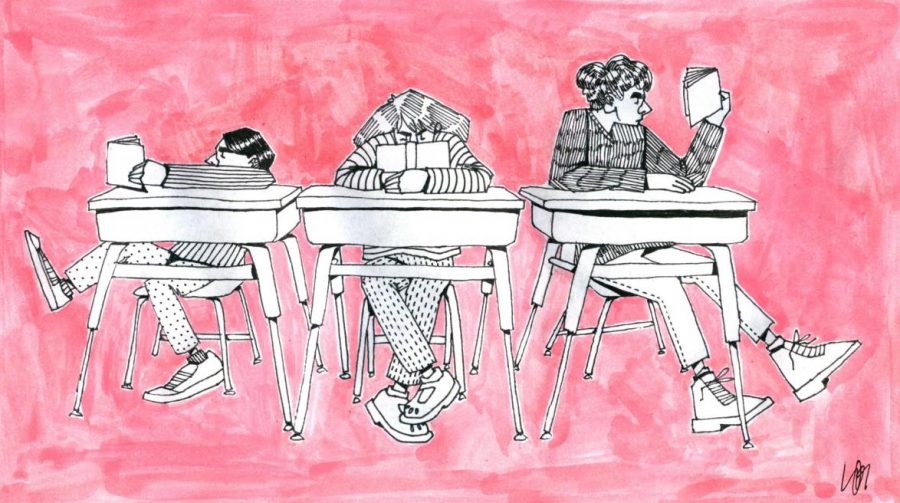Standardizing Classes is More Fair for Students and Teachers
Variance in Teaching Style Now Leads to Unequal Classrooms Later
November 29, 2018
You’re sitting with your friends, reminiscing over the classes you’ve had, when you run into an issue: your classes have nothing in common. Sure, they’re both called HN English 10, but while you’ve spent three months reading Frankenstein and written multiple essays, your friend hasn’t read Frankenstein, instead reading Things Fall Apart and written daily paragraphs. You ask your other friend, but they finished Frankenstein two months ago, and have been reading Macbeth. Why have you all had completely different experiences in the same course?
One of the most unusual things about CRLS is how varied classes are based on the teachers. Teachers having control over what they are teaching is by no means a bad thing, but when teachers teach classes so differently that students leave the class with entirely different skills, it becomes an issue. Many students attempt to change their schedule, not because they think their classes are wrong for them, but that their teachers are. Who would want to take class with Mr. A, who assigns weekly quizzes, while Mr. B doesn’t assign homework? If all a college will see is a grade, why shouldn’t you take Ms. C’s class, who curves every assignment, instead of Ms. D, who doesn’t allow for retakes or corrections? Simply put, due to the lack of standardized curriculum, students who perform the same on assessments, like the MCAS and SAT, get wildly different grades in the exact same classes.
This difference in curriculum doesn’t just impact students; it impacts teachers as well. In the beginning of the semester, a teacher will often ask you what you’ve learned in your previous classes, leading to a wide variety of answers. Some students have studied one concept, while others have learned an entirely different one, if they’ve learned it at all. Some students know about the same formulas, but with different names and variables. Due to the difference of instruction in a previous class, the teacher must constantly adjust their own curriculum to make sure that everyone starts at the same place, taking up valuable time. Even in very objective courses, such as math classes, this is an issue. This can result in issues for the teachers, as some students may enter Algebra 2 or Pre-Calculus without the conceptual knowledge that proofs help demonstrate.
While classes should not have curricula planned down to the day, it is necessary to establish central themes for a course. This way, students taking the same course will have shared experiences. For example, if every World History 2 teacher had to teach about the world wars, all students would be able to use their knowledge of the wars to help understand issues presented in HN U.S. History 1. I think that all classes of the same level should have a set number of points that must be taught during the class to help equally prepare students for standardized and national tests, as well as to prevent teachers from having to re-teach material to certain students.
This piece also appears in our November 2018 print edition.










